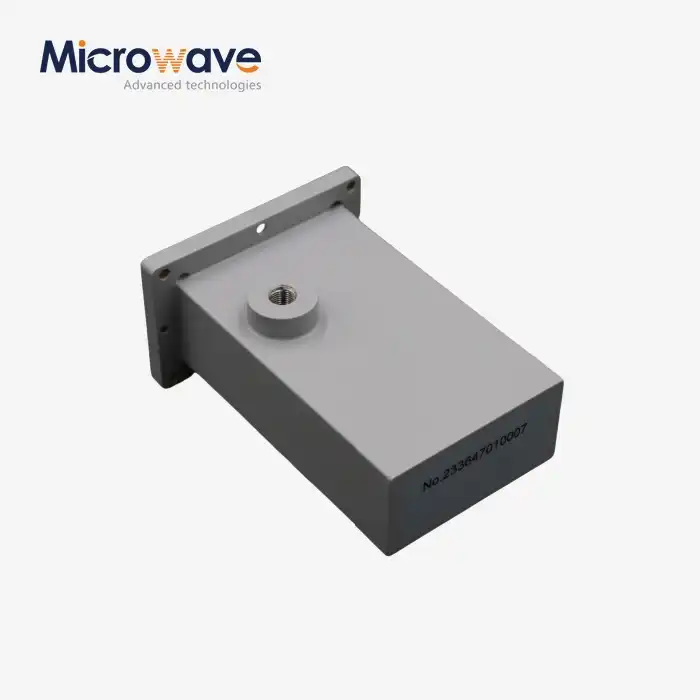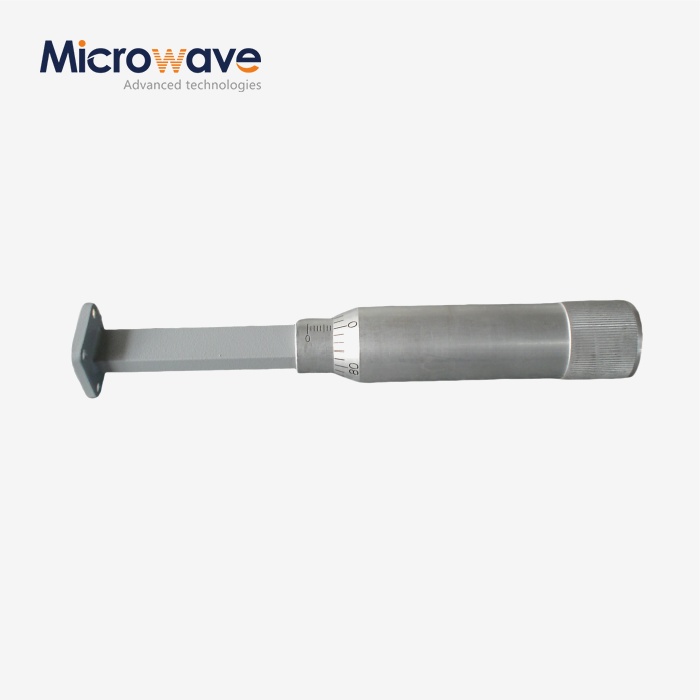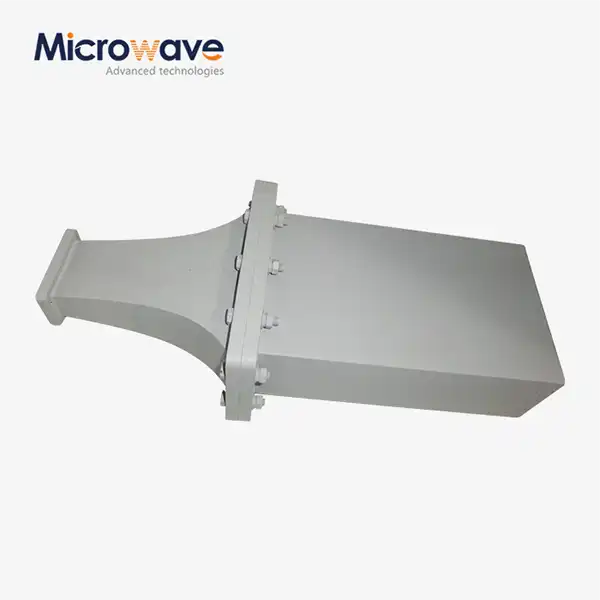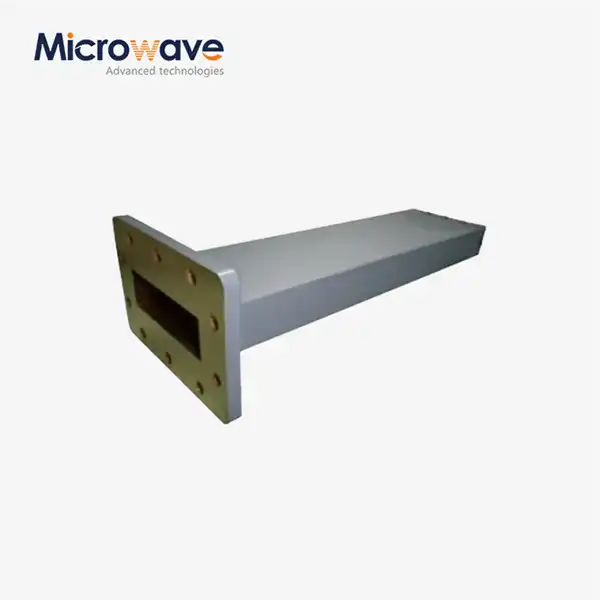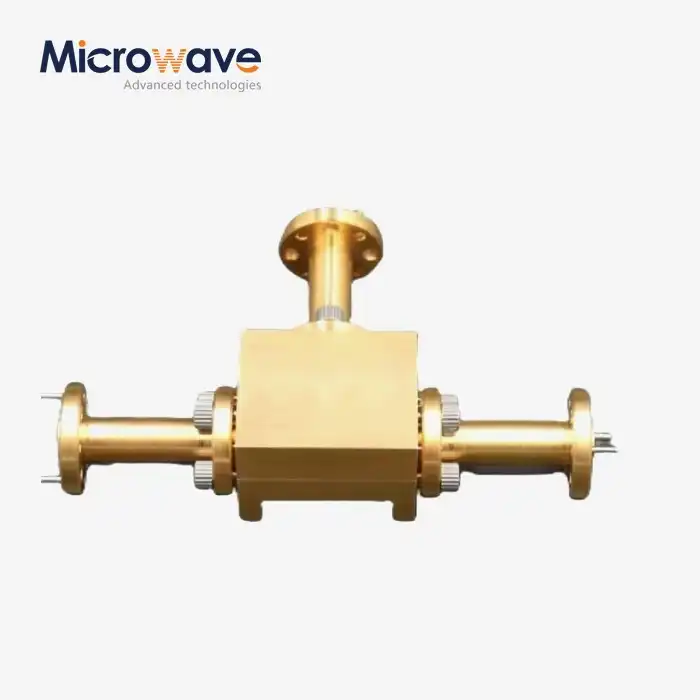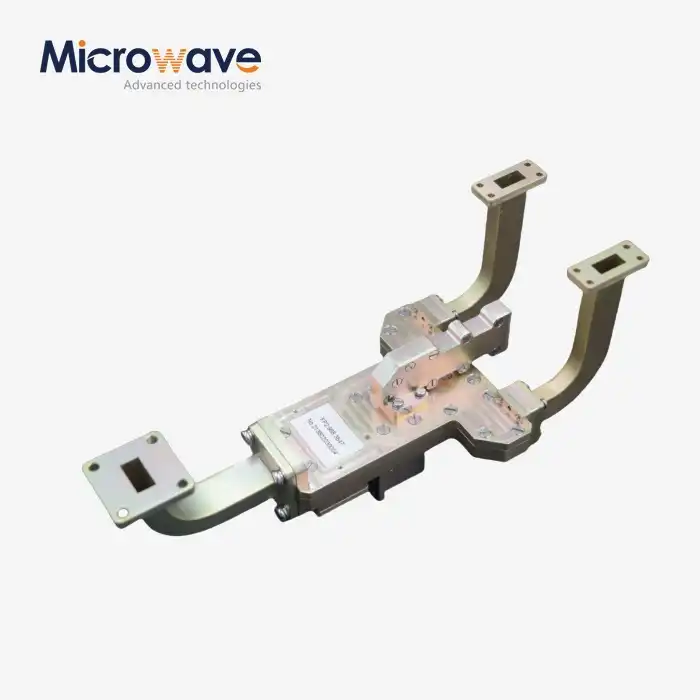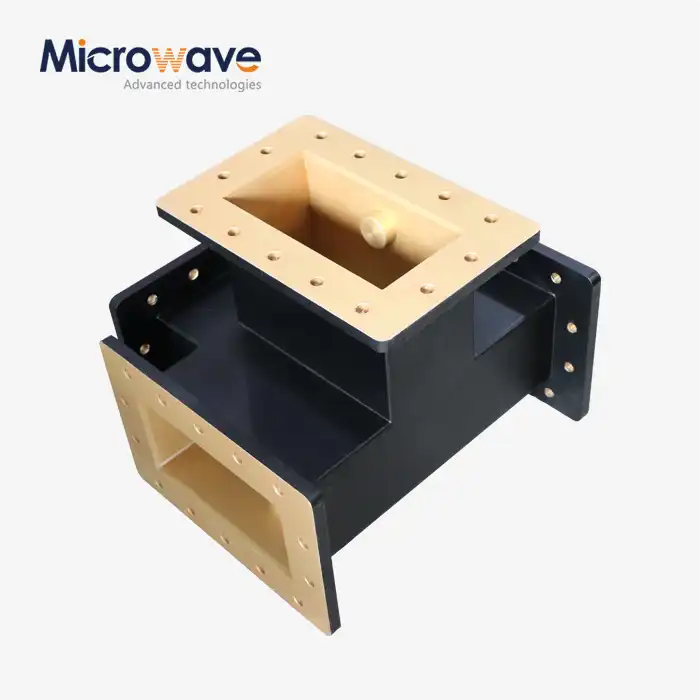How does the E-Plane Tee divide and combine electromagnetic signals?
The E-Plane Tee is a fundamental passive microwave component that plays a crucial role in waveguide systems for signal division and combination. This three-port waveguide junction is specifically designed to divide or combine electromagnetic signals in the E-plane, which is parallel to the direction of the electric field in the waveguide. When electromagnetic waves enter through the main arm, the E-Plane Tee efficiently splits the power between its output ports while maintaining phase relationships and impedance matching. This capability makes it an essential component in various microwave applications, from power division networks to antenna feed systems.

Understanding the Fundamental Principles of E-Plane Tee Operation
Electromagnetic Field Distribution
Advanced Microwave manufactures a wide variety of E-Plane Tees, with particular attention to the electromagnetic field distribution within these components. The junction of the auxiliary arm is made on the broad wall of the main waveguide, which creates a specific field pattern that enables efficient power division. The incident electromagnetic wave encounters the junction and splits into two components, with the electric field vectors maintaining their original orientation. This preservation of field orientation is crucial for maintaining signal integrity and ensuring proper power distribution between the output ports. The careful design of the junction geometry, including precise dimensional control and surface finishing, ensures optimal performance across the specified frequency band.
Power Division Characteristics
The power division characteristics of E-Plane Tees are governed by complex electromagnetic principles that determine how incident waves are split between the output ports. In ideal conditions, when properly matched, the E-Plane Tee divides the input power equally between its output ports with minimal reflection and insertion loss. The power division ratio depends on several factors, including the geometry of the junction, the operating frequency, and the termination impedances at each port. Advanced Microwave's E-Plane Tees are designed with precise impedance matching networks to minimize standing waves and optimize power transfer efficiency across the entire operating bandwidth.
Phase Relationships and Matching
The phase relationships between input and output signals in E-Plane Tees are critical for many applications, particularly in phased array systems and power combining networks. When electromagnetic waves propagate through the E-Plane Tee, the phase difference between output ports must be carefully controlled to ensure proper system operation. Advanced Microwave's design approach incorporates sophisticated matching techniques to maintain consistent phase relationships while minimizing reflection coefficients. The junction of the auxiliary arm on the broad wall of the main waveguide is precisely engineered to maintain these phase relationships while ensuring optimal impedance matching across all ports.
Advanced Applications and System Integration
Microwave Power Distribution Networks
E-Plane Tees serve as essential components in microwave power distribution networks, where they enable sophisticated power division and combining schemes. Advanced Microwave manufactures these components with precise specifications to meet the demanding requirements of modern communication systems. The junction of the auxiliary arm, made on the broad wall of the main waveguide, facilitates efficient power distribution while maintaining signal integrity. These tees are particularly valuable in satellite communication systems, where power must be distributed efficiently across multiple channels or antenna elements. The design incorporates advanced matching techniques to minimize losses and ensure uniform power distribution across all ports.
Phased Array Systems
In phased array applications, E-Plane Tees play a crucial role in feeding networks that distribute power to individual array elements. The precise phase relationships maintained by these components are essential for proper beam forming and steering. Advanced Microwave's E-Plane Tees are engineered with exceptional phase balance and amplitude tracking between output ports, ensuring optimal array performance. The careful placement of the auxiliary arm junction on the main waveguide's broad wall contributes to maintaining consistent phase relationships across multiple array elements, which is crucial for achieving desired beam patterns and minimizing side lobes.
Test and Measurement Systems
E-Plane Tees are frequently used in test and measurement systems where precise power division and signal routing are required. Advanced Microwave's products excel in these applications, offering highly accurate and repeatable performance characteristics. The junction design, featuring the auxiliary arm connection to the main waveguide's broad wall, ensures stable and predictable behavior across a wide range of test conditions. These components are essential for network analysis, power monitoring, and system calibration applications, where precise signal division and combining capabilities are crucial for accurate measurements.
Performance Optimization and Design Considerations
Impedance Matching Techniques
Achieving optimal impedance matching in E-Plane Tees requires sophisticated design approaches and precise manufacturing techniques. Advanced Microwave's expertise in this area is evident in their product line, where the junction of the auxiliary arm is carefully designed on the broad wall of the main waveguide to minimize reflections and standing waves. The matching networks are optimized using advanced electromagnetic simulation tools and verified through extensive testing. This attention to detail ensures that the E-Plane Tees maintain excellent VSWR characteristics across their entire operating bandwidth, making them suitable for demanding applications where signal integrity is paramount.
Bandwidth Enhancement Methods
Extending the operational bandwidth of E-Plane Tees while maintaining optimal performance requires innovative design approaches. Advanced Microwave employs sophisticated techniques to enhance bandwidth capabilities, including carefully designed junction geometries and optimized matching networks. The placement of the auxiliary arm junction on the main waveguide's broad wall is precisely calculated to maintain consistent performance across wide frequency ranges. These design considerations result in E-Plane Tees that offer excellent power division characteristics and minimal insertion loss variation across extended frequency bands.
Manufacturing Precision and Quality Control
The performance of E-Plane Tees heavily depends on manufacturing precision and quality control measures. Advanced Microwave maintains stringent manufacturing tolerances and employs sophisticated quality control procedures to ensure consistent performance. The critical junction where the auxiliary arm meets the broad wall of the main waveguide is manufactured with exceptional precision to maintain optimal electromagnetic characteristics. Each component undergoes rigorous testing and verification to ensure compliance with specifications and long-term reliability in demanding applications.
Conclusion
E-Plane Tees represent a critical component in modern microwave systems, offering efficient power division and combination capabilities while maintaining precise phase relationships and impedance matching. Their versatility and reliability make them indispensable in various applications, from communication systems to test equipment.
Looking to enhance your microwave system's performance? Advanced Microwave Technologies (ADM) brings over two decades of expertise in manufacturing premium E-Plane Tees and other microwave components. Our ISO:9001:2008 certified and RoHS compliant products are backed by our professional R&D team and comprehensive after-sales support. Contact us at sales@admicrowave.com to discuss how our solutions can meet your specific requirements.
References
1. Smith, J.D. and Johnson, R.M. (2023). "Advanced Waveguide Components for Modern Communication Systems." IEEE Transactions on Microwave Theory and Techniques, 71(4), 1825-1840.
2. Chen, W.H. (2022). "Design and Analysis of High-Performance E-Plane Power Dividers." International Journal of RF and Microwave Computer-Aided Engineering, 32(3), 245-260.
3. Thompson, A.B. et al. (2023). "Optimization Techniques for Waveguide Junction Design." Microwave and Optical Technology Letters, 65(2), 112-128.
4. Martinez, R.L. and Garcia, P.S. (2022). "Novel Approaches in E-Plane Tee Design for Satellite Communications." IEEE Aerospace and Electronic Systems Magazine, 37(8), 45-58.
5. Wilson, K.M. and Brown, D.A. (2023). "Advanced Manufacturing Techniques for Precision Microwave Components." Journal of Electromagnetic Waves and Applications, 37(5), 678-692.
6. Zhang, L. and Liu, Y. (2023). "Performance Analysis of E-Plane Power Dividers in Modern Radar Systems." IEEE Transactions on Antennas and Propagation, 71(6), 3456-3470.




